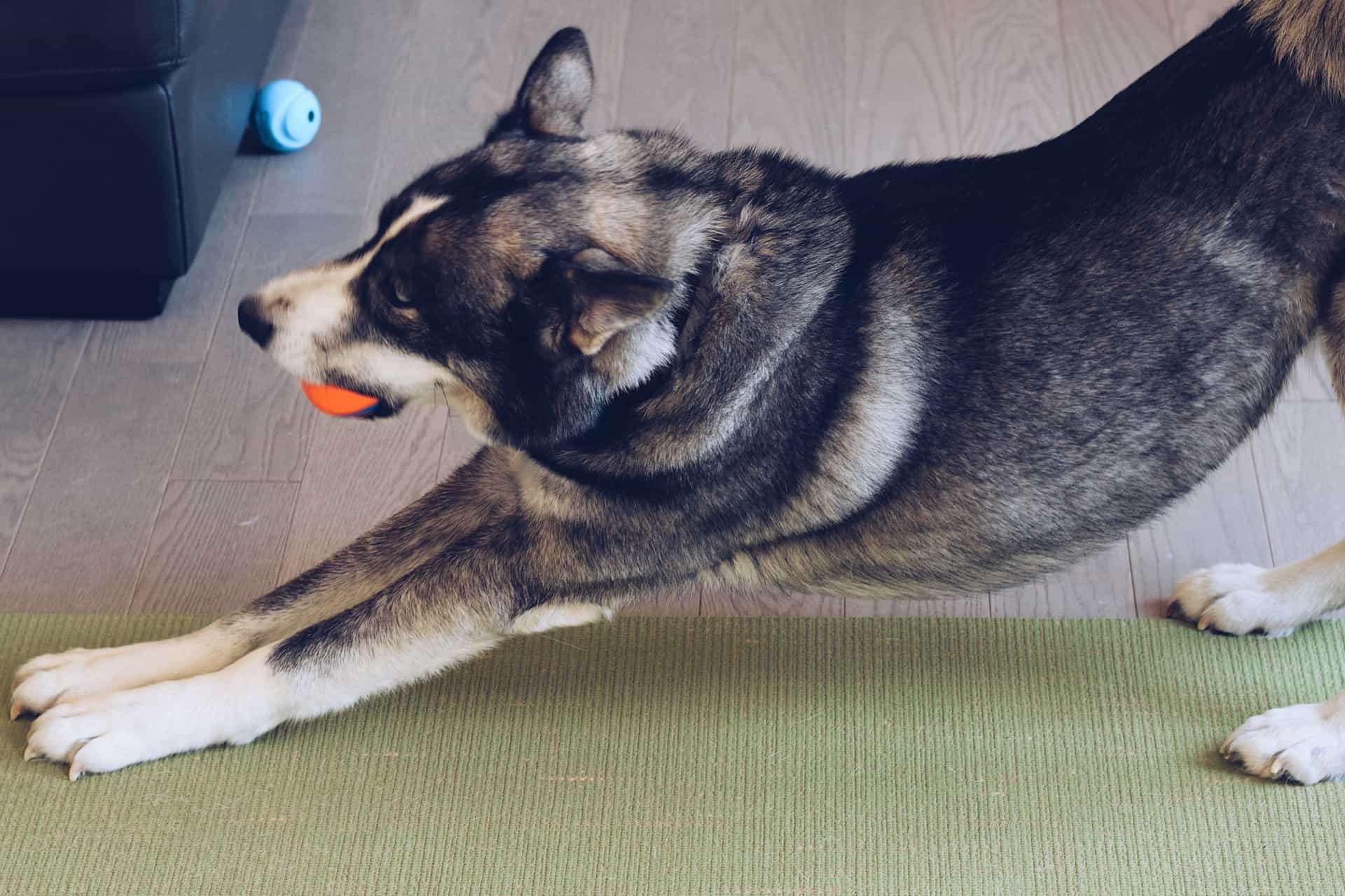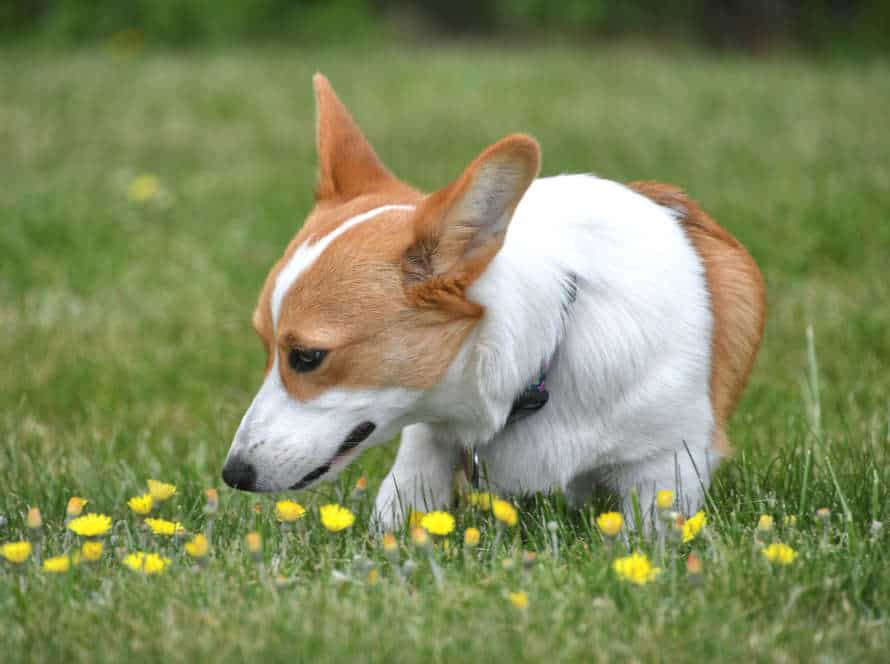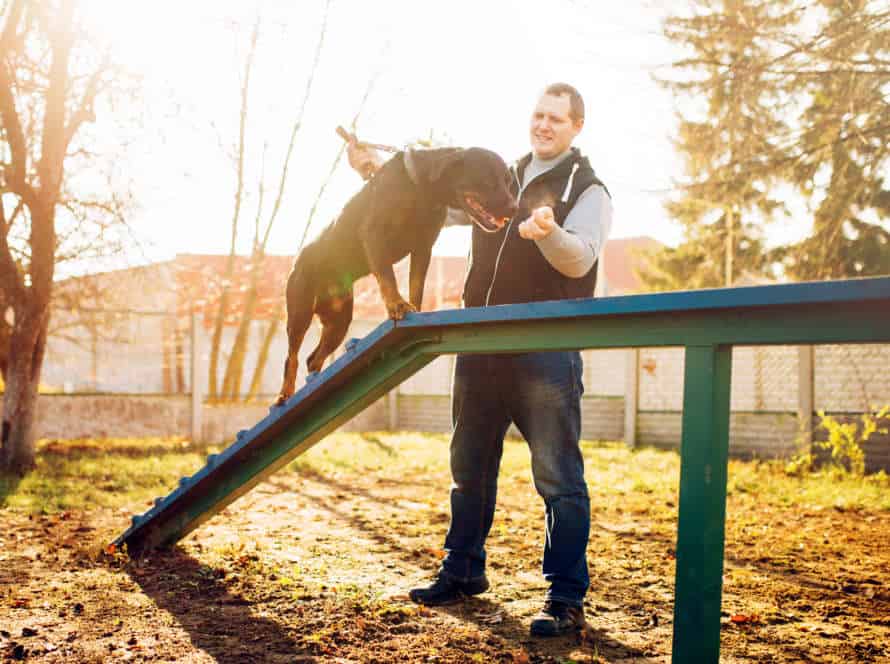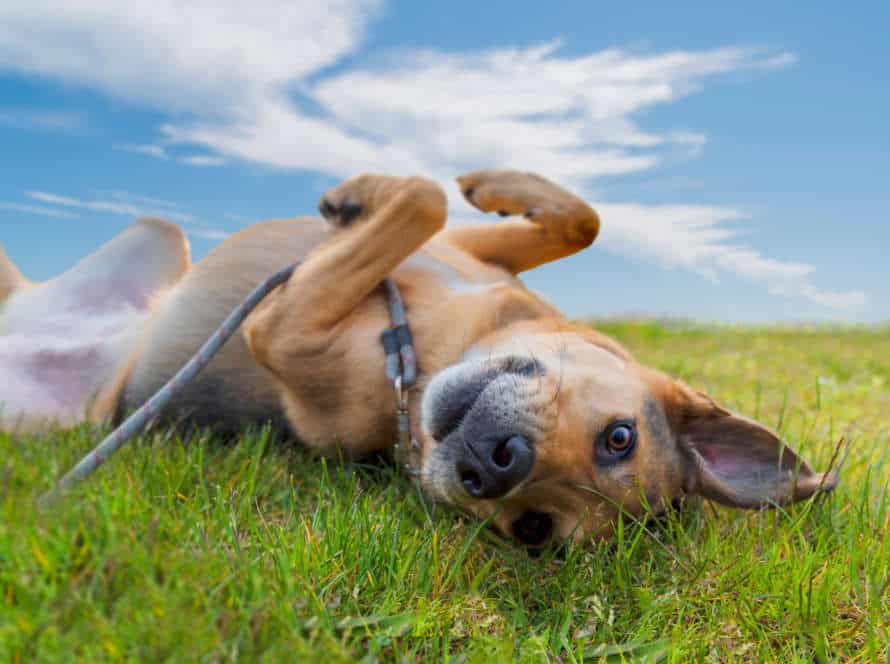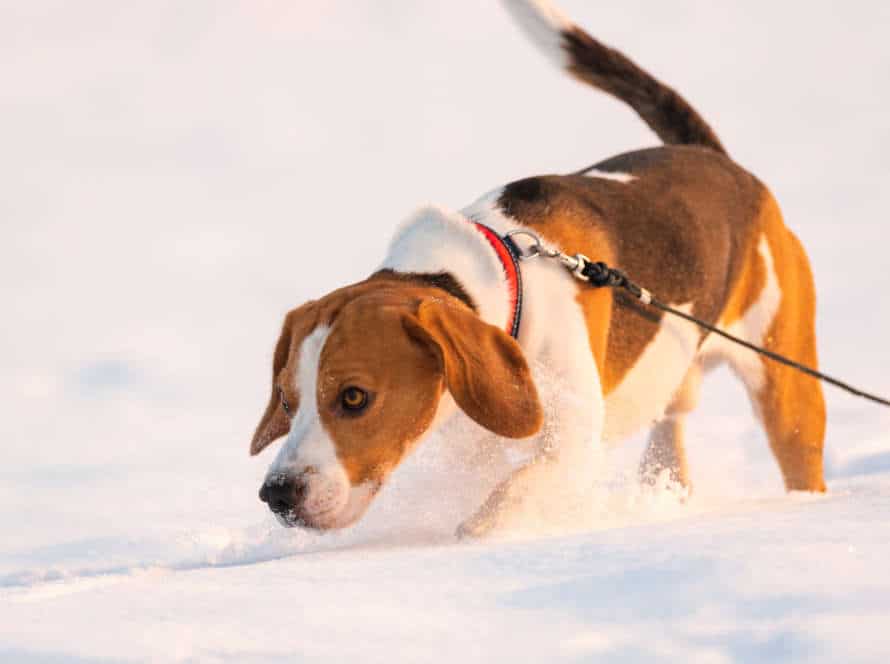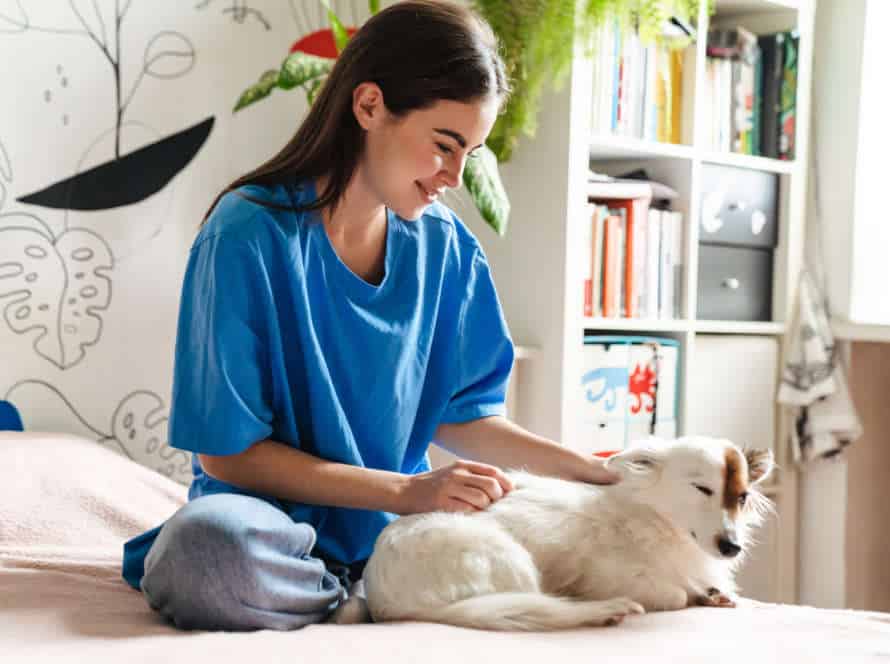Doggie Yoga: Train Your Dog to Perform the “Downward Dog”
Introducing Doggie Yoga! Train your pup to do the “Downward Dog”. This is a great way to strengthen the bond with your furry pal and help them improve their flexibility, balance, and obedience.
Here are the steps:
- Find a quiet, spacious room free from distractions.
- Show your dog a treat and use it to encourage them to the floor, between your feet.
- Hold the treat near their nose and move it slowly towards their tail. This should make them lower their head, neck, and chest to the ground.
- When they are in the “downward dog” position, give them the treat and praise them.
- Repeat this process several times to help them understand the command.
- Practice regularly and your pup will soon learn to do the “downward dog” without any treats or lures.
Pro Tip: Always be positive and use treats to reward your pup during training. Be patient and consistent. Remember that each pup learns at their own pace and style.
Understanding Doggie Yoga
Doggie yoga is a super fun way to get close with your pup. Plus, it stimulates their brains and bodies! To make the most of it, you should learn the basics and popular poses. Understanding these can help you get the full benefits.
What is doggie yoga?
Doggie Yoga, or Doga (Dog Yoga), is a special practice. It involves doing yoga with your four-legged friend. It can even include incorporating dogs into the poses!
This practice has lots of benefits. Like, it helps you and your pup bond better. Plus, it calms the dog and provides exercise.
To do the “Downward Dog” pose with your pup, here’s what to do:
- Tell your dog to get into a “tabletop” position. That’s when their shoulders are over their wrists and hips over the knees.
- Gently lift the pup’s hind legs up and straighten them into a “Downward Dog” pose.
- Hold their paws to help them balance in the pose.
Pro Tip: Doga is a great way to bond with your pup and get yoga’s benefits. But, it’s important to make sure your pup is safe and comfy. Avoid any pose that causes them pain or discomfort. It’s best to practice under an experienced yoga teacher.
The benefits of doggie yoga
Introducing Doggies to Yoga – or Doga! It’s the latest trend in canine wellness. This special activity brings many advantages!
For one, Doga enhances physical health by stretching, strengthening and balancing your pup. It also relieves stress and boosts relaxation. Plus, it reinforces the bond between you and your furry pal.
Intrigued? To start, practice basic poses with your pooch, such as the Downward Dog. Or, join a Doga class for extra guidance from an instructor. If you want to give your pup an extra boost of health and happiness, Doga is the way to go!
Pro Tip: Before attempting Doga, consult your vet to make sure your pup is good to go.
The different levels of doggie yoga
Doggie Yoga, also known as ‘doga‘, has different levels to suit your pup’s physical and mental abilities. Here’s the breakdown:
- Beginner: Perfect for pooches with minimal or no experience. Focus is on breathing, stretches and relaxation.
- Intermediate: Poses like Warrior and Tree need more balance and strength. Suitable for those with some yoga knowledge and good health.
- Advanced: Complex poses like Crow and Headstand require advanced balance, strength and flexibility.
Pro Tip: Always get advice from a pro dog trainer or yoga instructor before starting doggie yoga – for your pup’s safety and wellbeing.
Preparing for Doggie Yoga
Ready to bond with your pup while getting a great stretch? Doggie Yoga is the perfect activity! Before you start, some prep is necessary. To get your pup ready, learn the basics of yoga and adapt it for them. You can also teach your pup some tricks. Read on to find out how to prepare for Doggie Yoga!
Assessing your dog’s suitability for doggie yoga
Assessing if your pup is fit for doggie yoga is essential. Here are some points to ponder before you start:
- Health: Chat with your vet to make sure your dog’s healthy and not hurt.
- Temperament: See how your pup behaves in new places, with people, and other dogs. If they’re anxious or reactive, yoga may not be suitable.
- Training: Your dog should know their basics and obey your commands to practice safely.
- Age & Size: Any age and size can do yoga. But make sure the poses are good for their physical abilities.
Once you’ve assessed, you can begin to prepare for doggie yoga. Teach them the “Downward Dog” pose for a fun and calming experience.
Preparing your dog for doggie yoga
Doggie yoga—or ‘doga’—is a great way to bond with your pup and keep them healthy. Here’s how you can get started:
- Begin with simple obedience training. Teach your dog to obey commands like “sit”, “stay”, and “come”.
- Practice some basic yoga poses with your dog. Give treats for good behavior. Encourage your pup to imitate you—like with the “downward dog” pose.
- Introduce a mat or towel to designate a spot for practice.
- Build up sessions by increasing intensity and duration.
Pro tip: Be patient and consistent. With time and practice, your pup will get the hang of doggie yoga and you’ll both benefit.
Selecting the right environment for doggie yoga
Doga, or doggie yoga, has many advantages for both you and your pup. To make sure your session goes well, here are some tips:
- Find a tranquil spot in your house or garden to practice.
- Make sure there are no distractions or dangers, like toys or sharp objects.
- Lay down a comfortable mat or blanket for your pet.
- Play relaxing music and use aromatherapy for an extra peaceful atmosphere.
- Train your dog to do a “Downward Dog” before starting.
- Have fun and keep it short! With practice, you and your pup will be able to share a bonding and calming experience.
Introducing Your Dog to the “Downward Dog” Pose
Doggie yoga is awesome! It gives your pup physical and mental benefits. Plus, it helps you and your pup become closer. The “downward dog“ pose is a must-try for doggie yoga. Your pup will feel relaxed in this position. Now, let’s learn the basics of the most important pose in doggie yoga.
Teaching the basic “down” command
Teaching your dog the “down” command can be a great way to boost their obedience. Here’s how to do it:
- Hold a treat in front of them.
- Lower it slowly to the ground.
- Say “down” & encourage them to lay on their belly.
- Give them the treat & praise them.
- Gradually use the command “down” without using the treat.
Introduce your pup to yoga commands like “downward dog.” Bond with them while improving their flexibility & balance. Be patient, persistent & use treats, praise & love to reinforce positive behavior.
Pro-tip: Avoid force & punishment. These methods can cause stress, aggression & trust issues. Use positive reinforcement, like treats & praise, to reward good behavior & redirect negative behavior.
Progressing to the “downward dog” pose
Progressing to the “downward dog” pose can be great for pet owners who want to do doggie yoga with their furry friends. You need patience, encouragement, and positive reinforcement to train your pet. Here are some tips:
- Start by teaching basic commands like “sit” and “stay”.
- Give treats to encourage stretching and reaching forward with front paws.
- Gradually add the “downward dog” pose. Reward good behavior with treats and praise.
- Repeat regularly, gradually increasing time in the pose.
Pro tip: Check with your vet before beginning a new exercise routine with your pet.
Keeping your dog engaged in the pose
Introducing your pup to the “Downward Dog” can be great fun and helpful. But, keeping them interested can be tricky. Here are some tips to aid you:
- Use treats! Begin with their favorite snack. When they get into the pose, give the treat plus lots of encouragement.
- Be patient. It might take your pup longer to learn the pose, or stay in it. Remain calm and consistent.
- Practice often. Make the “Downward Dog” part of your daily routine and do it regularly with your dog.
- Make it fun! Experiment with different versions of the pose and add playtime to keep your pup engaged and motivated.
Advancing Your Dog’s Doggie Yoga Practice
You and your pup can do doggie yoga! With proper motivation and guidance, you can teach your pup “downward dog”. To advance to the next level, you need patience and dedication. Here are some tips and tricks to help you take your pup’s yoga practice up a notch.
Teaching other yoga poses to your dog
Go beyond the “Downward Dog” and teach your pup some yoga poses! This’ll help them stay healthy and relaxed. Here are a few to try:
- Warrior – Have them stand and stretch one leg back, and front legs forward.
- Tree – On all fours, lift one leg onto the opposite thigh and stretch arms above their head.
- Cobra – Lay down, raise their head and chest, and stretch their front legs and paws.
Practice each pose for a few minutes each day. Increase the duration as they get more comfortable. This will help with their muscles and promote bonding between you and your pup.
Incorporating props into your doggie yoga sessions
Make doggie yoga more fun for you and your pooch with props! They can target certain muscles, aid balance, and deepen stretches.
Try a yoga mat to keep your pup from slipping. Blocks modify poses and help get a deeper stretch. Straps improve flexibility and range of motion, and also aid in balance postures. Use treats as a motivator to get your pup to hold poses longer.
Props will not only help your dog advance their practice, but also build a stronger bond between you two. Pro Tip: Start with basic props and add more as your dog gets used to them.
Advanced doggie yoga and competitions
Advanced doggie yoga is great for you and your furry pal! And, if you’re looking for a challenge, why not try doggie yoga competitions?
To advance your doggie yoga practice:
- Regularly do basic poses to keep your pup engaged and happy.
- Use rewards, like treats, for positive reinforcement when your dog participates.
- Introduce new and more complex postures, checking your dog’s comfort level and flexibility.
- Challenge your pup with arm balances or inversions to help them build strength and flexibility.
Competing in doggie yoga is a fun way to show off your pup’s skills and meet other pup parents who share your passion. Just train with positivity, have fun and enjoy the experience!
Remember: Always check with your vet before beginning any new physical activity with your pup.
Safety Considerations for Doggie Yoga
Doggie Yoga is an awesome way to get close with your pup and give them more flexibility. But, safety must always come first. Prior to beginning doggie yoga with your pooch, remember these key safety factors.
Let’s review the vital safety factors you need to consider during doggie yoga.
The potential risks of doggie yoga
Practicing doggie yoga with your pup can bring many benefits, such as reduced stress, increased flexibility and a stronger bond. But, there are risks to consider first.
Dogs with arthritis, joint problems or a past injury should not be made to do poses that could worsen their condition. Also, older and overweight dogs may struggle with difficult poses, so they need modifications or breaks.
Make sure your dog is comfy with touch and manipulation, particularly near their ears, tail, and paws. Dogs with breathing issues or brachycephalic breeds should not do exercises or poses that could put a strain on their airways.
Before beginning doggie yoga, talk to both your vet and a certified trainer. During the practice, pay attention to your dog’s body language and signals.
Pro-tip: Use treats, praise, and positive reinforcement to motivate your dog during yoga. Never make them do a pose they don’t want to.
Safety tips for practicing doggie yoga
Practicing doggie yoga with your pup can be a lot of fun and good for both of you. But, safety is key! Here are some things to keep in mind:
- Take it easy – Start simple and don’t push them into anything they’re not comfortable with.
- Don’t overfeed – Eating before yoga could cause indigestion and make it harder to be flexible.
- Stay cool – Avoid doing yoga in hot temperatures that could cause overheating.
- Pay attention – Look out for signs of discomfort or pain and adjust the poses accordingly.
Remember to check with your vet before starting any new physical activity. With these safety tips, you and your pup will be doing the “downward dog” pose and enjoying the benefits of yoga in no time!
When to seek professional help for your dog’s doggie yoga practice.
Doggie yoga can be a fun and beneficial activity for you and your pup. But, there are times when professional help should be sought to keep your pet safe. Here are 3 times when this is advised:
- If your dog has joint problems or health issues which could affect their yoga. Get a vet’s opinion to make sure it’s safe.
- If you’re new to doggie yoga and are uncertain about the right techniques or any possible contraindications.
- If your pooch is panting too much or looks uncomfortable during practice. They may be overdoing it, so make adjustments.
Pro Tip: Take it slow and listen to your dog’s body. If in doubt, get professional help!
Frequently Asked Questions
Q: What is doggie yoga?
A: Doggie yoga, also known as Doga, is a type of yoga practice that involves having your dog participate with you.
Q: Is doggie yoga safe for my dog?
A: Yes, doggie yoga is safe for dogs as long as you follow proper techniques and listen to your dog’s body language.
Q: Can all dogs do doggie yoga?
A: Most dogs can participate in doggie yoga, but it is important to consider your dog’s temperament and physical ability before starting any new exercise routine.
Q: Can doggie yoga help with behavior issues?
A: Yes, incorporating doggie yoga into your dog’s routine can help with behavior issues such as anxiety or hyperactivity. It can also help with bonding between you and your dog.
Q: Do I need any special equipment to do doggie yoga with my dog?
A: No, you do not need any special equipment to do doggie yoga. A yoga mat can be helpful, but not required.
Q: Can doggie yoga improve my own yoga practice?
A: Yes, practicing doggie yoga with your dog can improve your own yoga practice by helping you develop a deeper awareness of your body and breath.

